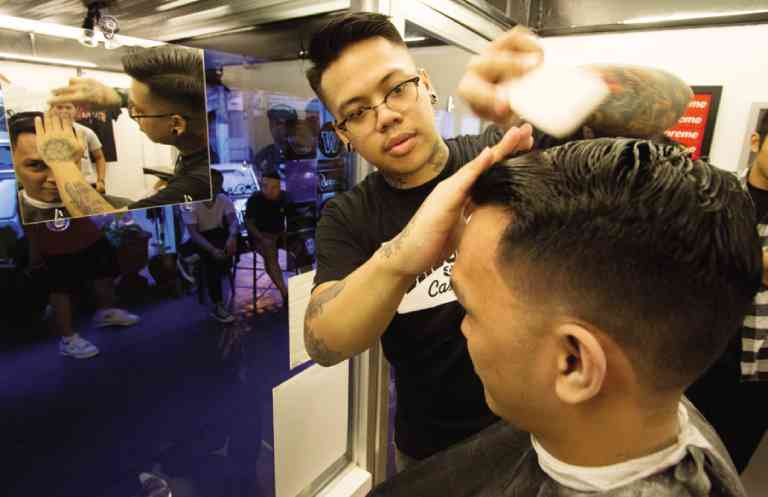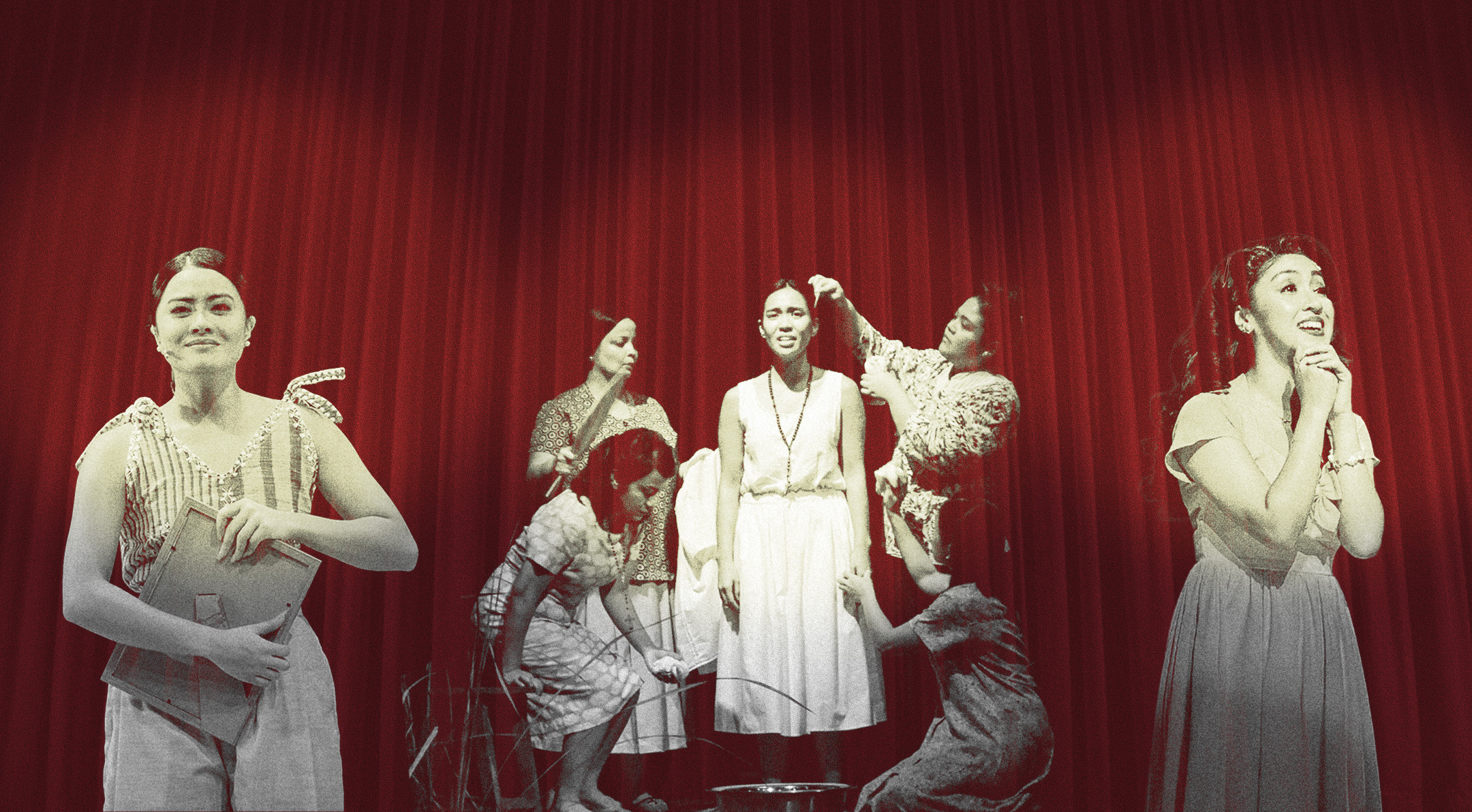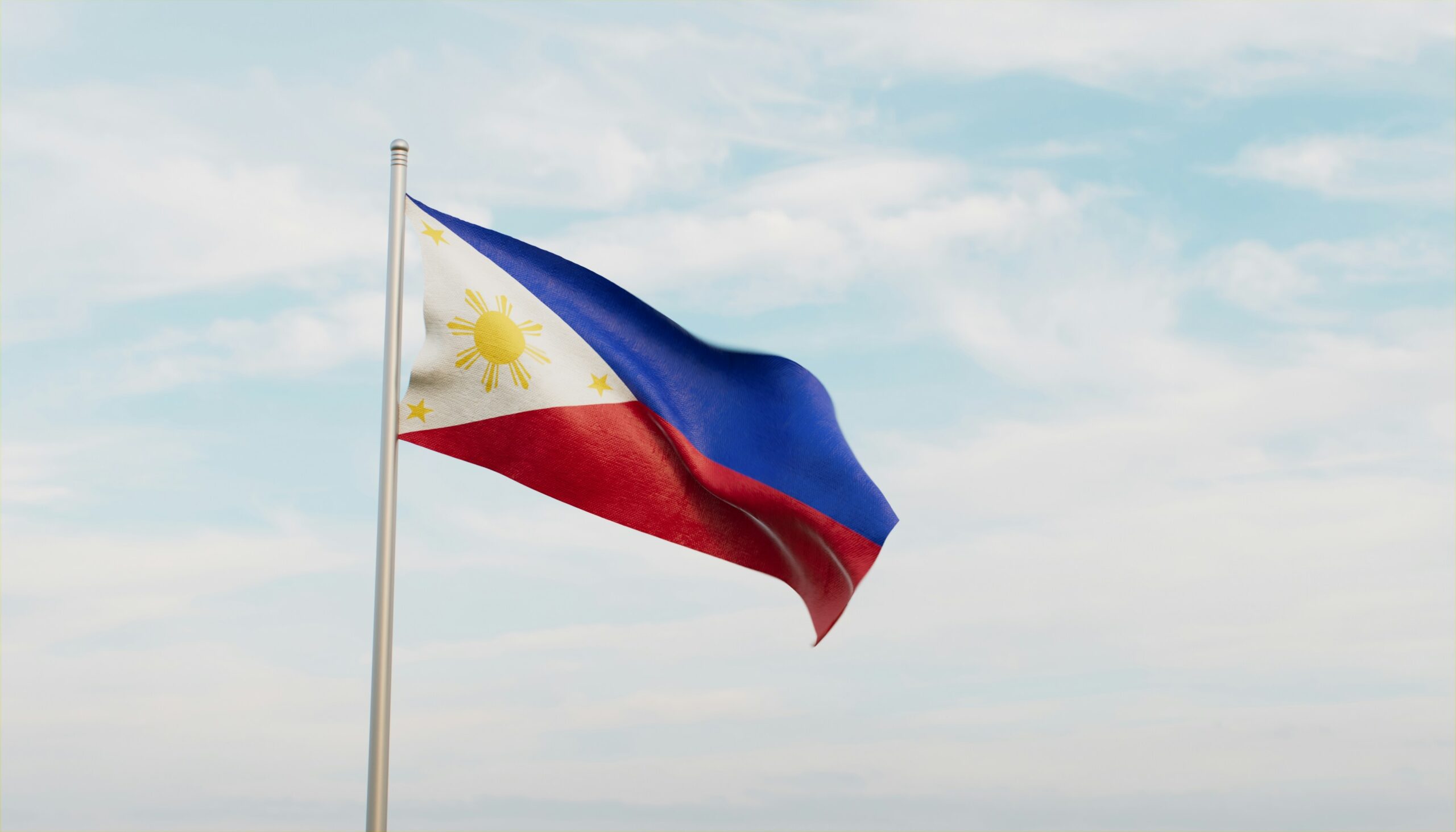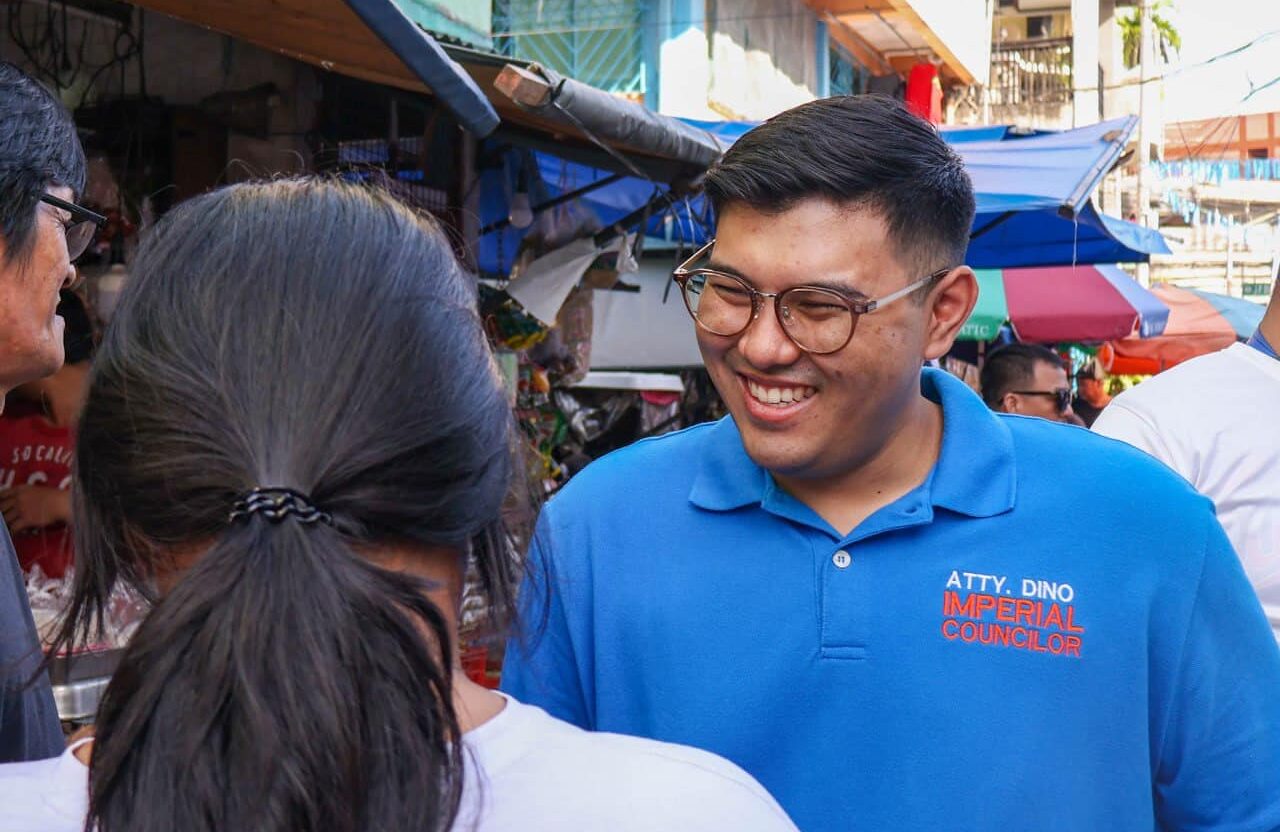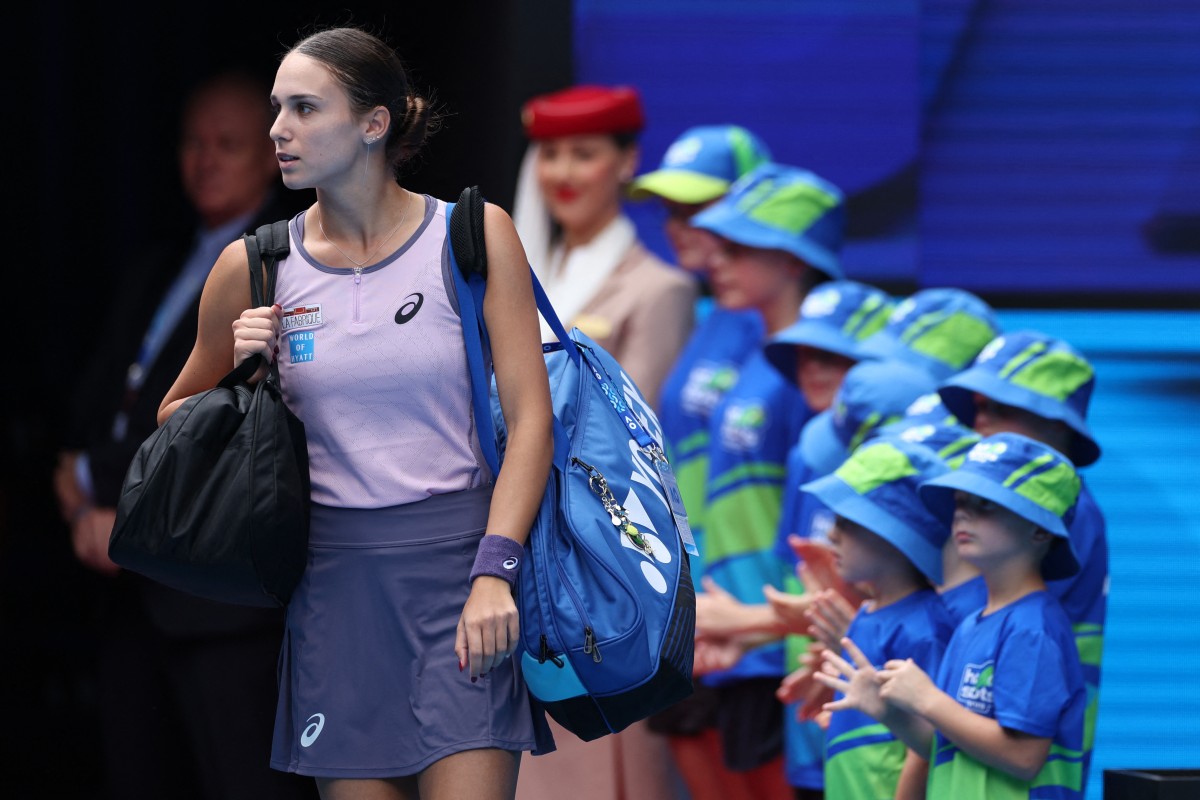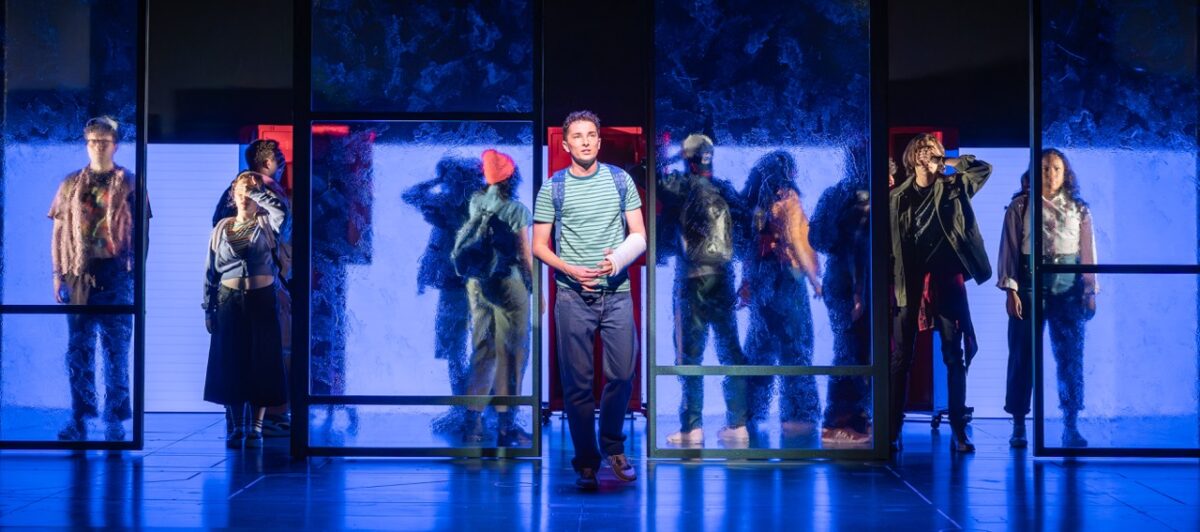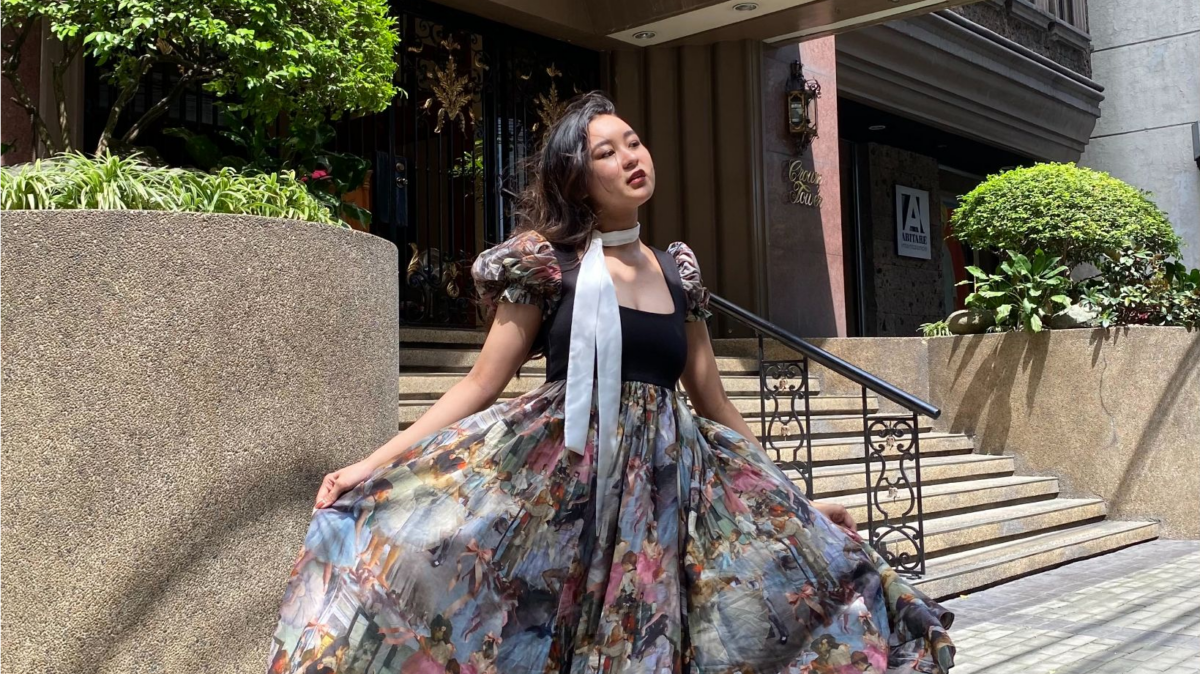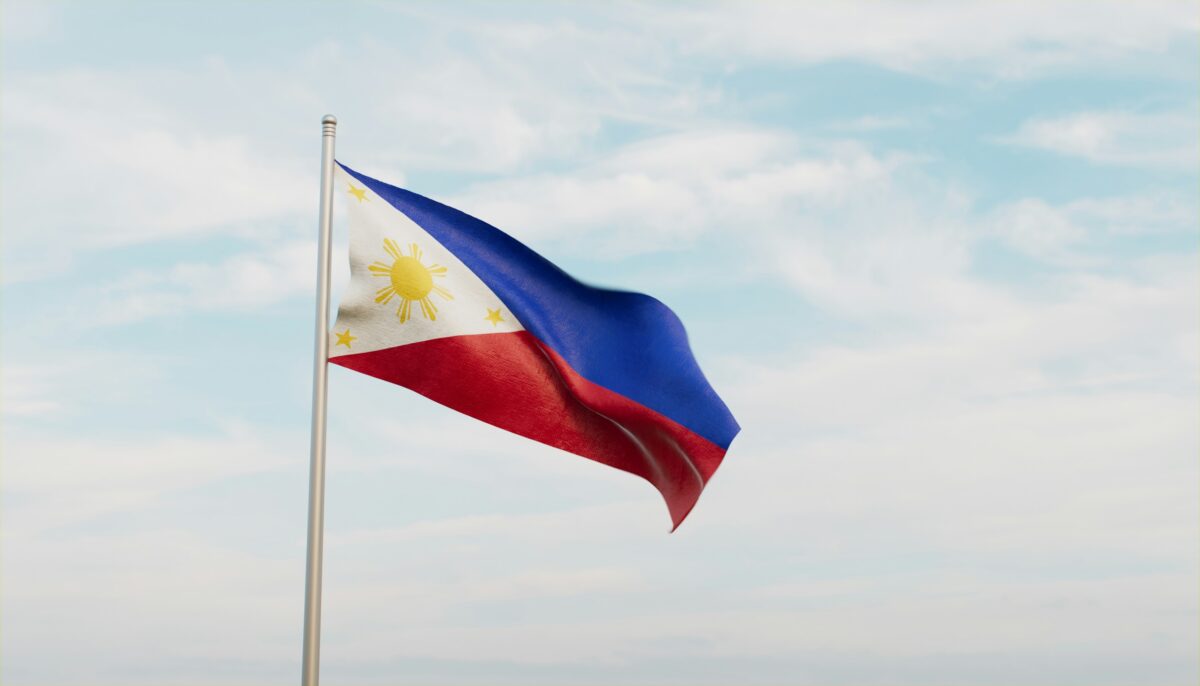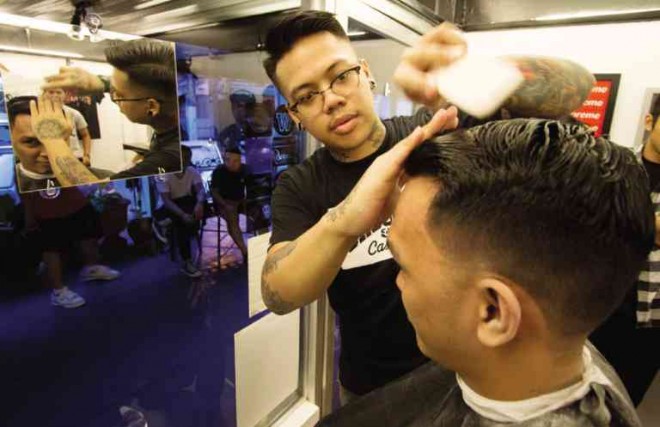
Right around the time I hit puberty, I graduated from the ghetto barbershop where I had been getting my crew cut ever since I could remember, to the VIP barbershop where my father and his cronies went to.
I remember sitting in the chair for the first time, breathing in the scent of talcum powder, bay rum, pomade and tobacco, and feeling like a man among men.
For one thing, the barbershop was one of the few establishments in town that had air-conditioning—a rare luxury in those golden years before martial law.
The cool air attracted a motley assortment of denizens: beat cops slacking off from patrol duties by having their nails done and chatting up the manicurist (the only female presence in an otherwise all-male domain); the local bookies taking bets; the town’s big shots treating themselves to a ritual trim, shave, massage and hot towel; and neighborhood idlers just wasting an afternoon away.
In between customers, the barbers studied the “daily double” racing forms, read Tiktik magazine or listened to Matt Monroe crooning on the transistor radio.
Back in the day, barbers were keepers of certain arcane arts. Apart from cutting your hair, the barber could also excavate clotted wax deposits from your ear canal with an assortment of specialized tools, tame your unruly hair with an “Iper” treatment (because real men don’t get perms) or improve your complexion with a “Boncilla” (because real men don’t get facials).
A Barber also knew how to give massages, sometimes with a vibrating appliance strapped to his hand. He could also crack your neck, knuckles and finger joints like a chiropractor.
Three Flowers pomade
All I ever had was the basic short back and sides with a right side part, no grease please.
But most of the clientele were totally old-school, favoring the classic gravity-defying pompadour style a la Eddie Gutierrez or Joseph Estrada, which called for copious amounts of Three Flowers pomade.
Either way, clients walked out of the barbershop feeling, as we used to say, “isputing.”
Whatever happened to the good old neighborhood barbershop, you ask?
Well, the ’70s sort of happened to it.
Right around the time The Beatles released “Let It Be,” I stopped going to the barbershop, for the simple reason that I stopped having my hair cut. As a bona fide dope-smoking hippie, I had decided that it was no longer cool to be isputing, and taking Crosby, Stills and Nash’s advice, decided to “let my freak flag fly.”
I’ll never forget the last time I stepped into the old barbershop and sat in my customary chair. In a preemptive move, my father had dragged me into VIP kicking and screaming because, out in the streets, soldiers were pulling longhairs out of jeepneys and giving them buzz cuts on the spot, in those first few weeks after martial law was declared.
That sort of soured the whole barbershop experience for me.
By the time I had recovered enough from the trauma to consider having a proper haircut once more, things had really changed.
All my friends had stopped going to barbershops. Instead, they had their hair “styled” in unisex hair salons.
The mullet had landed, that short-in-front, long-in-the-back style favored by Ziggy Stardust-era David Bowie and Wings-era Paul McCartney. The mullet called for intricate layer-cutting that your average barber was totally clueless about, the kind of skill you could learn only in beauty school (and real men don’t go to beauty school).
For the next couple of years, I took to getting my hair done by a flaming queen with a 5 o’clock shadow named Perlie who was, nevertheless, a dab hand with a pair of scissors and a blow dryer.
The advent of disco nearly sounded the death knell for the barbershop, as men flocked like seagulls to hair salons to have their hair styled, moussed, and blow-dried just like Basil and Hajji. Only the most dyed-in-the-wool traditionalists still went to barbershops.
Tug-of-war
Since then, it’s been a tug-of-war between old-school barbershops and hair salons for the masculine mane, with stylists clearly gaining the upper hand as hair fashions came and went in synch with pop trends. Disco, punk and new wave, and postpunk clearly gave hair salons the upper hand with their asymmetric cuts and wild color shifts. The grunge years and the advent of “wash and wear” hairstyles favored neither. The popularity of K-pop and androgynous anime-inspired haircuts seemed the final nail in the coffin for the old-school barbershop.
Somewhere along the way, barbershops also stopped being man-caves where men could take a minivacation from their wives and girlfriends, and just hang out with the bros. The arrival of the modern barbershop chain standardized services and introduced quality control, but it didn’t invite community the way old-school neighborhood barbershops did.
But don’t write off the barbershop just yet.
Thanks to the popularity of television’s “Mad Men” and other retro-inspired entertainment, “gentlemen’s hairstyles,” as well as older ideas about male grooming and style, are enjoying something of a revival.
Having appropriated nearly every previous stylistic twist that ever was, hipsters are turning to old-school hairstyles, in droves. Bearing names like the Executive Contour, the High and Tight, and the Skin Fade, the new-old hairstyles are neat, clean, razor-sharp and, dare I say it, isputing.
Not too long ago, I attended what was billed as a “Slick Barbers Session,” at a trendy boutique in Manila. Much to my surprise, a crowd of casually dressed twenty-somethings had been lining up for hours to get their hair cut. Most of them were getting variants of what used to be known as the High and Tight: tapered at the sides and greased back on top in a slick pompadour with pomade. Like Brad Pitt in “Fury.”
I asked Mak Azores, one of the Slick Barbers, what was going on here.
“We want to bring back the culture of barbering, where the barbershop is a kind of man-cave where guys can hang out,” he replied.
Not too long after, he and fellow Slick Barbers EZ Abinal and Christian “Indio” Bendaña opened Slick Barbers Co. at Tribal Cuts in Robinsons Place, Manila, an actual brick-and-mortar barbershop.
Of course, not everything new is old again. True, the Slick Barbers and their clientele are part of a growing community, but these days, they do much of their hanging out online, where the new old-school barbershops as well as pomade entrepreneurs and enthusiasts maintain a strong social media presence.
Like Sykes said in “The Wild Bunch”: “It ain’t like the old days, but it’ll do.”

